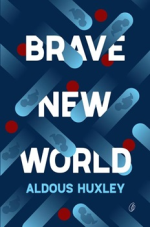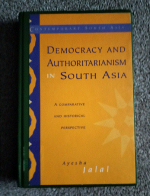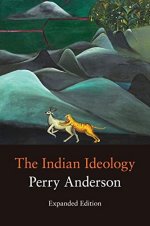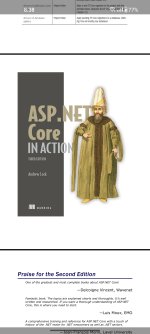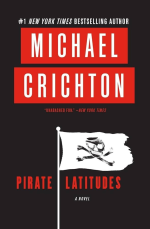In a recent interview Ambassador Ashraf Jehangir Qazi mentioned a book
The Indian Ideology by Perry Anderson, it's gone on my immediate reading list.
Has anyone read it?
View attachment 7393
A national and, to a great extent, global consensus on India that has got built over the years is that the post- colonial India is a story of success of democracy in difficult circumstances of a developing capitalist economy. This story of success is garnished with references to a secular constitution in a country of many religions, a free press, an independent judiciary and a thriving intellectual community. To this portrait of India is added the name of Mahatma Gandhi, the leader of India’s national movement for independence, as a man of peace, and that of Jawaharlal Nehru, India’s first prime minister, as a towering Third World leader who is credited with laying the foundations of modernising India out of a backward agrarian economy. Many of these claims are grounded in varying degrees of truthful capturing of some aspects of India’s economic and political reality but the problem emerges when the captured images are magnified to a scale that a gloried picture of India emerges and leads to theorisation and celebration of the ‘Idea of India’. It gives birth to what Anderson, using a term Marx had used for Germany, calls Indian Ideology. This Indian Ideology of celebration of the ‘Idea of India’ is shared, in different hues, by a vast majority of Indian intellectuals within India or settled abroad. India’s Hindu nationalist party (BJP) took this celebration many steps further some years ago by coining the slogan of ‘Shining India’. In these essays, Anderson sets up the task of not only unearthing the roots of this ideology but also interrogating the validity of the claims of this ideology and the political implications of this ideology. He accomplishes this task by focusing his lens on Gandhi, the partition of India in 1947 and the formation of the ‘independent republic’ under the leadership of Nehru.
The running thread that Anderson identifies as connecting three phases of modern Indian history- the struggle for independence led by Gandhi, the 1947 partition and the making of the Indian republic under Nehru’s leadership- is Hindu-tainted Indian nationalism. Through a close reading of Gandhi’s collected works (100 volumes) and historical studies of the Indian nationalist movement, Anderson establishes that Gandhi transformed the Congress party from an elite pressure group into a mass movement but did so by injecting ‘a massive dose of religion-mythology, symbology, theology- into the national movement’ (p. 22). Gandhi saturated the Congress’s mass ‘appeal with a Hindu imaginary’ (p.94), and contrary to the Indian historiography’s construction of Jinnah, the Muslim League leader, as the villain behind religious communalisation, Anderson shows that ‘it was not Jinnah who injected religion into the vocabulary and imagery of the national movement, it was Gandhi’ (p.93). In Gandhi’s dictum ‘If religion dies, India dies’ (p.94), religion meant Hindu religion. For him, the Ramayana, the epic on the life of Hindu God Rama, was ‘the greatest devotional work in all literature’ (Gandhi’s original words cited by Anderson, p.24).
The Hinduisation of the national movement resulted in the Congress party that led the struggle for India’s independence to become a predominantly Hindu party. Anderson points out that during the 1930s; only 3% of the party membership was Muslim (p. 94) in a country where Muslims constituted about 25% of the population. This Hinduisation of the Congress party contained within it the seeds of India’s partition on religious grounds between a Hindu-majority Hindustan and a Muslim-majority Pakistan. The Muslim fears about overwhelming Hindu domination once the Congress becomes the ruling party were not only not addressed, they were dismissed. Jinnah’s attempts to make the Congress agree to a confederal structure of governance that could keep India united were rebuffed, and resulted in Muslim League eventually pushed into seeking an independent Muslim-majority Pakistan (p. 67).
When independence came, to ‘hallow the solemn occasion, Nehru and his colleagues sat cross-legged around a sacred fire in Delhi while Hindu priests-arrived post-haste from Tanjore for the ritual-chanted hymns and sprinkled holy water over them, while women imprinted their forehead with vermilion. Three hours later, on a date and a time stipulated by Hindu astrologers’ (p. 103), Nehru gave his ‘tryst with destiny’ speech at the stroke of midnight on 14 August 1947. The Constitution that was drafted for the new republic was seriously Hindu-tainted. The symbolic insertion of ‘Bharat’ in the opening article naming the country; the provisions for strong centralisation supportive of Hindu nationalism; the active intervention of the state to consolidate Hindu identity through reform of the Hindu religion; the definition of ‘Hindu’ supportive of Hindu assimilation agenda towards Buddhists, Jains and Sikhs; cow protection; pre-eminence status for Hindi in the Devanagari script and special importance for Sanskrit are all features of the constitution which make its secularism seriously Hindu-tainted (for details, see my ‘Hindu Bias in India’s ‘Secular’ Constitution: probing flaws in the instruments of governance’, Third World Quarterly, Vol. 26, No. 6, pp. 909-926, 2005).
Review.
https://sikhsiyasat.net/the-indian-ideology-by-perry-anderson-a-review-by-pritam-singh-oxford/
@RescueRanger @_NOBODY_ @HRK @VCheng @Oscar @Quwa @ghazi52






